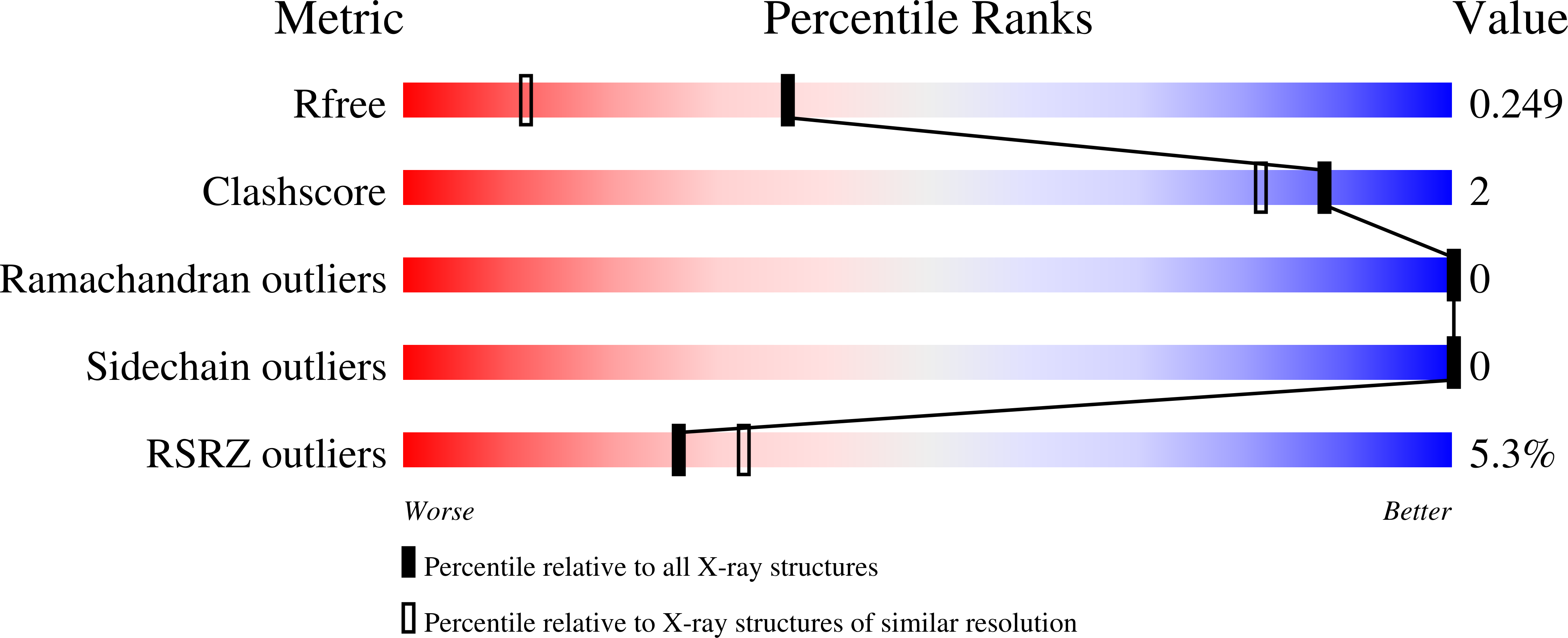Structural studies of a vasorelaxant lectin from Dioclea reflexa Hook seeds: Crystal structure, molecular docking and dynamics.
Pinto-Junior, V.R., Osterne, V.J., Santiago, M.Q., Correia, J.L., Pereira-Junior, F.N., Leal, R.B., Pereira, M.G., Chicas, L.S., Nagano, C.S., Rocha, B.A., Silva-Filho, J.C., Ferreira, W.P., Rocha, C.R., Nascimento, K.S., Assreuy, A.M., Cavada, B.S.(2017) Int J Biol Macromol 98: 12-23
- PubMed: 28130130
- DOI: https://doi.org/10.1016/j.ijbiomac.2017.01.092
- Primary Citation of Related Structures:
5TG3 - PubMed Abstract:
The three-dimensional structure of Dioclea reflexa seed lectin (DrfL) was studied in detail by a combination of X-ray crystallography, molecular docking and molecular dynamics. DrfL was purified by affinity chromatography using Sephadex G-50 matrix. Its primary structure was obtained by mass spectrometry, and crystals belonging to orthorhombic space group P2 1 2 1 2 1 were grown by the vapor diffusion method at 293K. The crystal structure was solved at 1.765Å and was very similar to that of other lectins from the same subtribe. The structure presented R factor and R free of 21.69% and 24.89%, respectively, with no residues in nonallowed regions of Ramachandran plot. Similar to other Diocleinae lectins, DrfL was capable of relaxing aortic rings via NO induction, with CRD participation, albeit with low intensity (32%). In silico analysis results demonstrated that DrfL could strongly interact with complex N-glycans, components of blood vessel glycoconjugates. Despite the high similarity among Diocleinae lectins, it was also reported that each lectin has unique CRD properties that influence carbohydrate binding, resulting in different biological effects presented by these molecules.
Organizational Affiliation:
Universidade Federal do Ceará (UFC), Fortaleza, Ceará, Brazil.

















